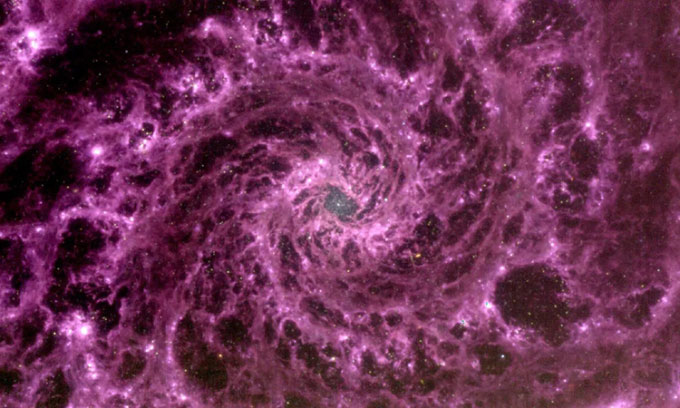Images compiled from new observational data from the James Webb Space Telescope reveal that the galaxy Messier 74 resembles a “death spiral.”

Messier 74 galaxy in a color-processed image from raw data of the James Webb Telescope. (Image: NASA)
The James Webb Space Telescope captured an image of Messier 74 – also known as NGC 628 or the Phantom Galaxy – on July 17 and sent it back to Earth. Using the raw data released by NASA, Professor Gabriel Brammer from the University of Copenhagen in Denmark created a color-filtered image that provides a mesmerizing view of the colossal spiral structure.
The image reveals Messier 74 appearing as a “death spiral” with ethereal purple spiral arms. However, this does not accurately reflect what we observe in reality.
The purple hue comes from wavelengths emitted by radiation within the galaxy, which cannot be seen in visible light. These wavelengths fall within a part of the spectrum dominated by the emission of polycyclic aromatic hydrocarbons (PAHs).
“The emission from PAHs makes the filters used for blue and red more pronounced compared to green,” Brammer explains.

Messier 74 galaxy captured by the Hubble Telescope in visible light. (Image: NASA/ESA)
Located approximately 32 million light-years away in the constellation Pisces, Messier 74 features spiral arms extending from two nearly perfectly symmetrical branches, making it a “template” for spiral galaxies. This colossal structure has a diameter of up to 95,000 light-years and contains about 100 billion stars.


















































